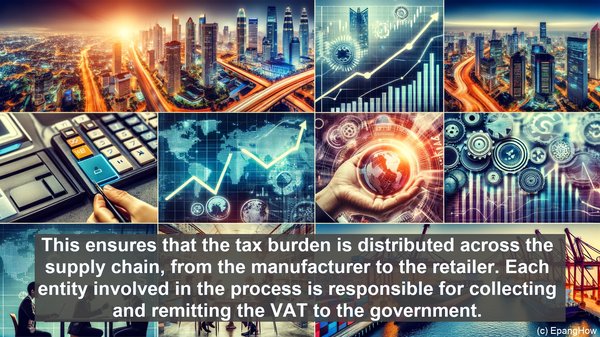Introduction: Taxation as a Revenue Source
Taxation is an indispensable aspect of any government’s financial framework. It serves as a primary source of revenue, enabling the state to fund public services, infrastructure development, and various other initiatives. Two types of taxes that often come up in discussions are value added tax (VAT) and sales tax. While they may seem similar at first glance, a closer examination reveals distinct characteristics.
Understanding Value Added Tax (VAT)
Value added tax, as the name suggests, is a tax levied on the value added at each stage of production and distribution. Unlike sales tax, which is typically imposed only at the final point of sale, VAT is imposed at multiple stages. This ensures that the tax burden is distributed across the supply chain, from the manufacturer to the retailer. Each entity involved in the process is responsible for collecting and remitting the VAT to the government.

The Input-Output Mechanism of VAT
One of the key features of VAT is its input-output mechanism. Businesses can claim a credit for the VAT they have paid on their inputs, such as raw materials or services. This credit, often referred to as input tax credit, can be offset against the VAT liability on their outputs, i.e., the goods or services they sell. This mechanism ensures that VAT is levied only on the value added at each stage, preventing double taxation.
VAT: A Progressive Taxation System
Another noteworthy aspect of VAT is its progressive nature. Since VAT is imposed at each stage of production, entities with higher turnover or those involved in multiple stages of the supply chain end up paying more VAT. This makes VAT a relatively equitable tax, as it takes into account the economic activity and value addition of each entity. Additionally, VAT often includes provisions for exempting or zero-rating certain essential goods and services, further enhancing its fairness.

Sales Tax: A Point-of-Sale Taxation
In contrast to VAT, sales tax is levied only at the final point of sale. It is a percentage of the retail price of a product or service and is collected by the retailer. The retailer then remits the tax to the government. Unlike VAT, sales tax does not consider the value added at earlier stages of production or distribution. It is a more straightforward tax, both in terms of collection and calculation.
Sales Tax: Variations and Complexity
While sales tax may seem simpler than VAT, it can also be more complex due to its variations. In some jurisdictions, sales tax may have different rates for different types of goods or services. There may also be exemptions or reduced rates for certain categories. These variations can make compliance challenging for businesses, as they need to accurately determine the applicable rate for each transaction.
Comparing VAT and Sales Tax: Pros and Cons
Both VAT and sales tax have their advantages and disadvantages. VAT, with its input-output mechanism, ensures that the tax burden is distributed across the supply chain and prevents cascading taxation. It also offers more flexibility in terms of rate adjustments. On the other hand, sales tax is simpler to administer and may be more suitable for jurisdictions with a less complex economic structure. However, it can be regressive, as it does not consider the economic activity at earlier stages.
